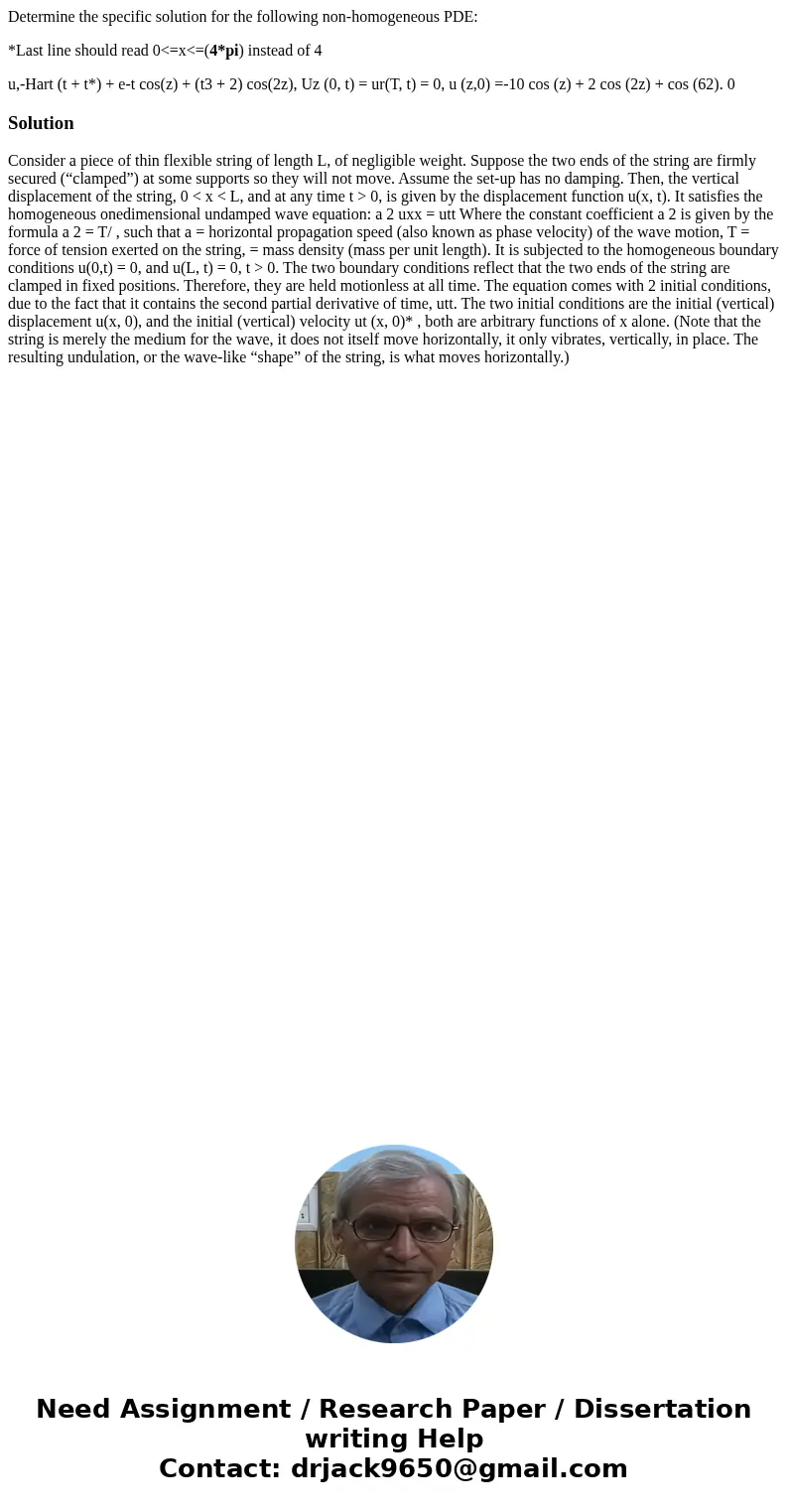Determine the specific solution for the following nonhomogen
Determine the specific solution for the following non-homogeneous PDE:
*Last line should read 0<=x<=(4*pi) instead of 4
u,-Hart (t + t*) + e-t cos(z) + (t3 + 2) cos(2z), Uz (0, t) = ur(T, t) = 0, u (z,0) =-10 cos (z) + 2 cos (2z) + cos (62). 0Solution
Consider a piece of thin flexible string of length L, of negligible weight. Suppose the two ends of the string are firmly secured (“clamped”) at some supports so they will not move. Assume the set-up has no damping. Then, the vertical displacement of the string, 0 < x < L, and at any time t > 0, is given by the displacement function u(x, t). It satisfies the homogeneous onedimensional undamped wave equation: a 2 uxx = utt Where the constant coefficient a 2 is given by the formula a 2 = T/ , such that a = horizontal propagation speed (also known as phase velocity) of the wave motion, T = force of tension exerted on the string, = mass density (mass per unit length). It is subjected to the homogeneous boundary conditions u(0,t) = 0, and u(L, t) = 0, t > 0. The two boundary conditions reflect that the two ends of the string are clamped in fixed positions. Therefore, they are held motionless at all time. The equation comes with 2 initial conditions, due to the fact that it contains the second partial derivative of time, utt. The two initial conditions are the initial (vertical) displacement u(x, 0), and the initial (vertical) velocity ut (x, 0)* , both are arbitrary functions of x alone. (Note that the string is merely the medium for the wave, it does not itself move horizontally, it only vibrates, vertically, in place. The resulting undulation, or the wave-like “shape” of the string, is what moves horizontally.)

 Homework Sourse
Homework Sourse